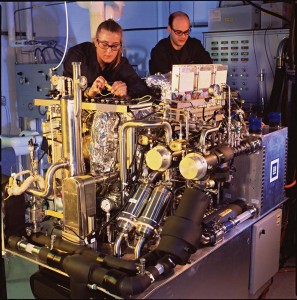General Motors, in a bid to save cash and expedite the development of new technology, is restructuring its research and development efforts – but the move is going to be felt in the form of job cuts, especially in suburban Detroit.
As part of the shake-up, GM is reducing the size of the research and development staff based at the GM technical center in Warren by 25% and closing a research center in Bangalore, India. GM officials said the goal of the restructuring is to bring innovations to the market faster.
“It’s very competitive now,” said GM spokesman Dan Flores.
The changes follow a shift in the leadership at the research and development group. Alan Taub, who had been in charge of R&D, was replaced by John Lauckner on April 1, Lauckner will also serve as GM’s chief technical officer, GM officials said.
As part of the reorganization, the size of the research and development staff will be cut to 300 from the current level of 400. The research center in Bangalore, which employs 90, will be closed completely and the work now underway in Bangalore will be reassigned to other parts of GM’s research and development network.
Some employees, many of whom have advanced degrees, will be offered other jobs in GM, Flores said. “There are other openings at GM but it’s too early to speculate how many will wind up in other
positions, Flores said.
As part of the re-organization, the small research center near Rochester, New York dedicated to fuel cell development will be transferred from the R&D group to GM’s Pontiac, Michigan-based powertrain unit. The 60 or so employees assigned to the fuel cell center stay in Rochester, Flores said. “It’s a reporting change,” he said.
The shift, however, suggests GM is eager to find a way to commercialize the research and development work on fuel cells, which has been underway for the better part of 15 years.
GM’s research and development organization has a long history and the organization has been responsible for several notable innovations that have become fixtures on the modern automobile, including the airbag and the catalytic converter. The organization also has done considerable research on the materials used in building vehicles, pollution controls and, most recently, autonomous driving where a vehicle pilots itself.
Flores said the changes will not have any impact on the advanced battery lab at the Warren Technical center, which was hit by a fire and explosion last month. The battery lab is part of GM’s vehicle engineering group, he said.

